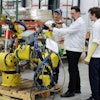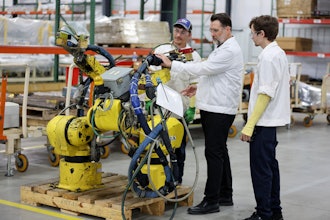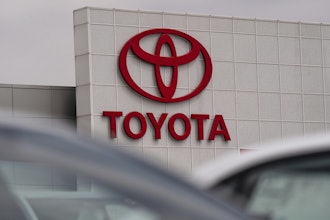
As the old saying goes, knowing is half the battle. By isolating and analyzing each of the HR-related issues in the manufacturing industry on an individual basis, distinct strategies can be developed to maximize the effectiveness of various solutions, ranging from marketing tactics and technology platforms to corporate culture enhancement and training procedures.
Eliminate Information Silos
Just like the many different types of equipment used on a manufacturing line, the highly specialized skill sets and best practices in the typical manufacturing workflow should be treated as an asset and protected accordingly. HR and management shouldn’t treat this workflow as a given but, instead, take the time and effort to fully understand the process involved. Such understanding can help develop internal training programs to better acclimate new employees.
Enhance Overall Productivity
Procedures that are mired in paper-based systems are not only inherently inefficient, but also fail to appeal to the more tech-oriented worker base that is so desired by the manufacturing sector. Old-fashioned procedures present an increasingly insurmountable barrier to attracting new, digitally-savvy talent.
Empower the Workforce
Of course, while attracting such new talent is critical to future success, current success is entirely dependent on the existing workforce. Implementing an MES or paperless manufacturing system will empower current workers and significantly enhance management’s ability to regulate and efficiently administer teams, procedures, and machinery throughout all phases of production.
Collecting feedback from employees throughout their employee lifecycle will help ensure they feel heard. This is especially important if manufacturing hopes to attract the younger generations.
Workflow Management
Paperless manufacturing can also significantly reduce errors from workers that fail to thoroughly read and absorb specific work instructions. Such new systems can ensure all necessary steps are precisely followed on a shop floor. In essence, the system serves as a digital instructor of sorts, making sure the benefits of knowledge and experience are seamlessly transferred when key employees and their wealth of specialized knowledge are lost to retirement or attrition.
Minimize Technology Gaps
While analyzing the different processes and procedures, be diligent in identifying any gaps that are exposed along the way, developing strategies to permanently address those discrepancies. Likewise, it is important to avoid a myopic perspective that devotes lopsided attention to any individual component of the manufacturing value chain because, as another saying goes, you’re only as strong as your weakest link. Devoting disproportionate resources toward a single area will provide no benefit if other underachieving areas will still inhibit operation-wide efficiency.
Make Needed Change to the Culture
While marketing campaigns and expanded technology platforms can certainly alleviate some of the negative perceptions – justified or not – towards the sector, making fundamental changes to the underlying culture is the only way to directly address the heart of the problem. Manufacturing needs to buck many of its more traditional, wait-and-see approaches and take any underlying cultural issues head-on. Appealing to dynamic, tech-oriented talent requires a far more dynamic solution than the status quo. There is no better source to understand how culture changes and new initiatives are being received than the employees themselves. Collect feedback before, during and after culture initiatives are implemented to measure their success.
Enhancing Your Recruitment Brand
There are four distinct steps that can help you develop a brand that is attractive to the particular segments of candidates desired.
- Take a proverbial walk in a jobseeker’s shoes. Try to assess your brand from your target’s perspective.
- Properly define your recruiting message to help build a brand that is truly reflective of the values and underlying mission throughout your organization.
- Be financially responsible with your approach, adopting measures to improve your brand without creating a new and formidable line item.
- Implement a comprehensive course of action that allows you to actively manage and maximize your employment brand both today and tomorrow.
Leverage Social Media
Developing a successful brand now relies on your ability to create engaging content and attract potential candidates that might otherwise have turned a blind-eye to your recruitment message. Specifically, infusing various forms of paid promotional content throughout your social media will allow you to target specific talent with far higher degrees of precision and impact. By designing and distributing your outreach by targeting particular affinities like job experience, interests, and a variety of other demographic points, you can far increase the likelihood of your content reaching the desired audience segment.
Employee Referral Program
In light of the prevalence of those social media platforms, leveraging the heightened connectivity between people to your recruiting benefit can pay significant dividends. Implementing a reward system that incentivizes your current workforce to recommend a position within the organization that eventually leads to a hire can vastly expand your recruiting reach while simultaneously vetting a candidate through the referral itself.
Simplify the Process
The recruiting process should be agile and streamlined in order to accommodate varying schedules and maximize convenience. A laborious, drawn-out interview and hiring experience will, more often than not, lead candidates to lose interest and quickly become frustrated with interminable application procedures and too many interviews conducted by multiple people at multiple times.Try to infuse maximum flexibility and expediency into recruitment procedures in order to shorten the process as much as possible without sacrificing efficacy and impact.
Arnaud Grunwald is the Chief Strategy Officer at betterworks.






















